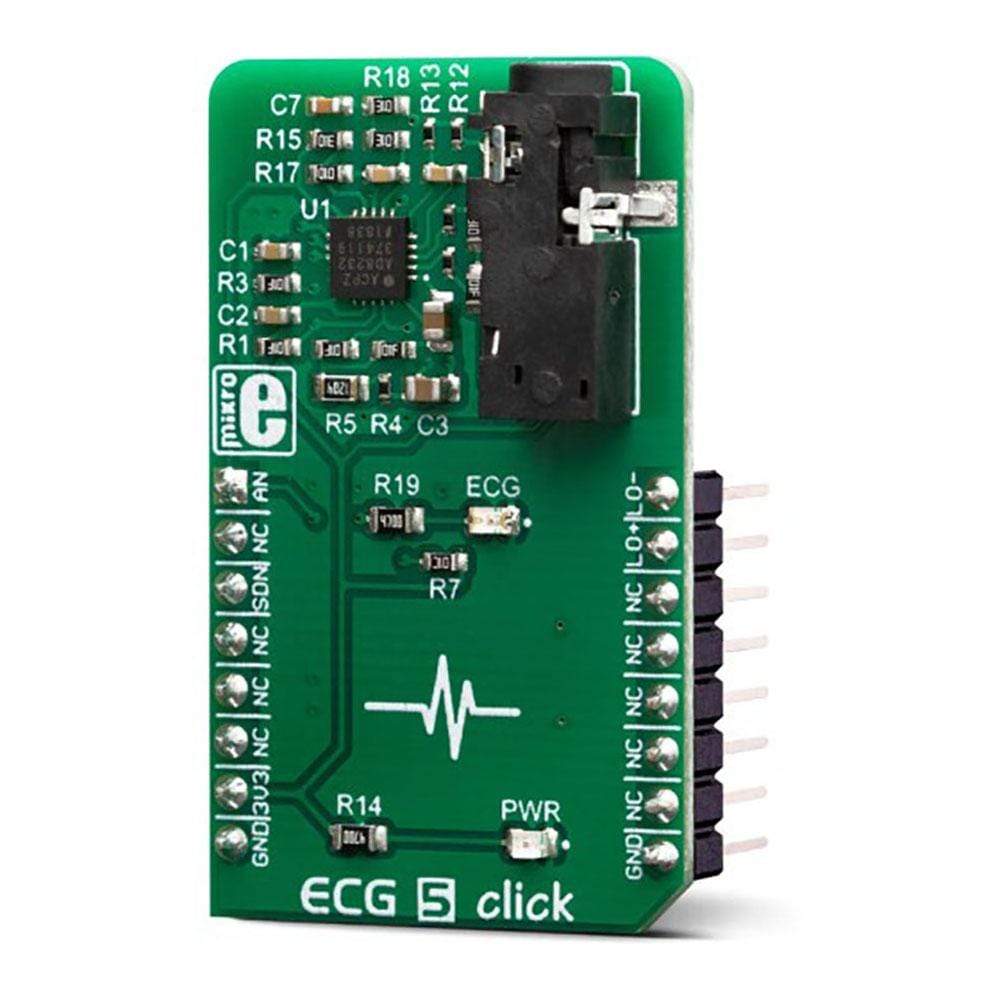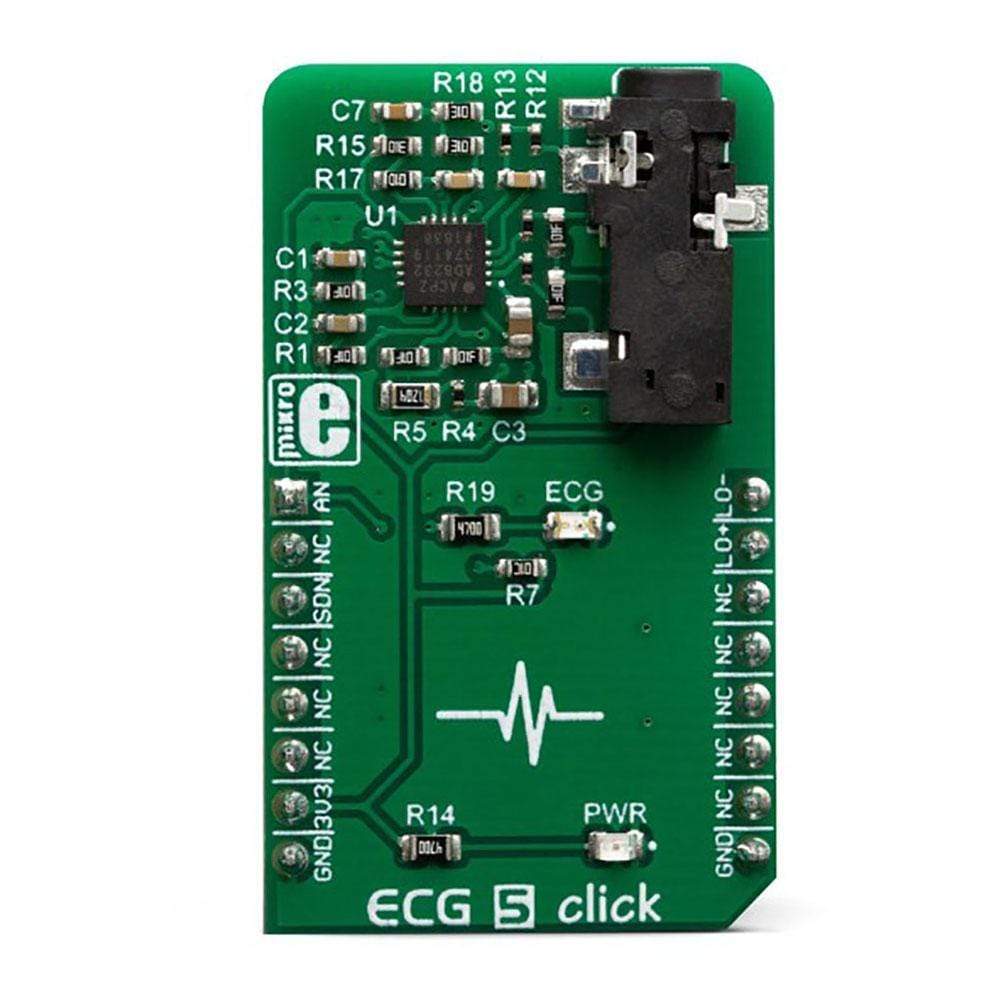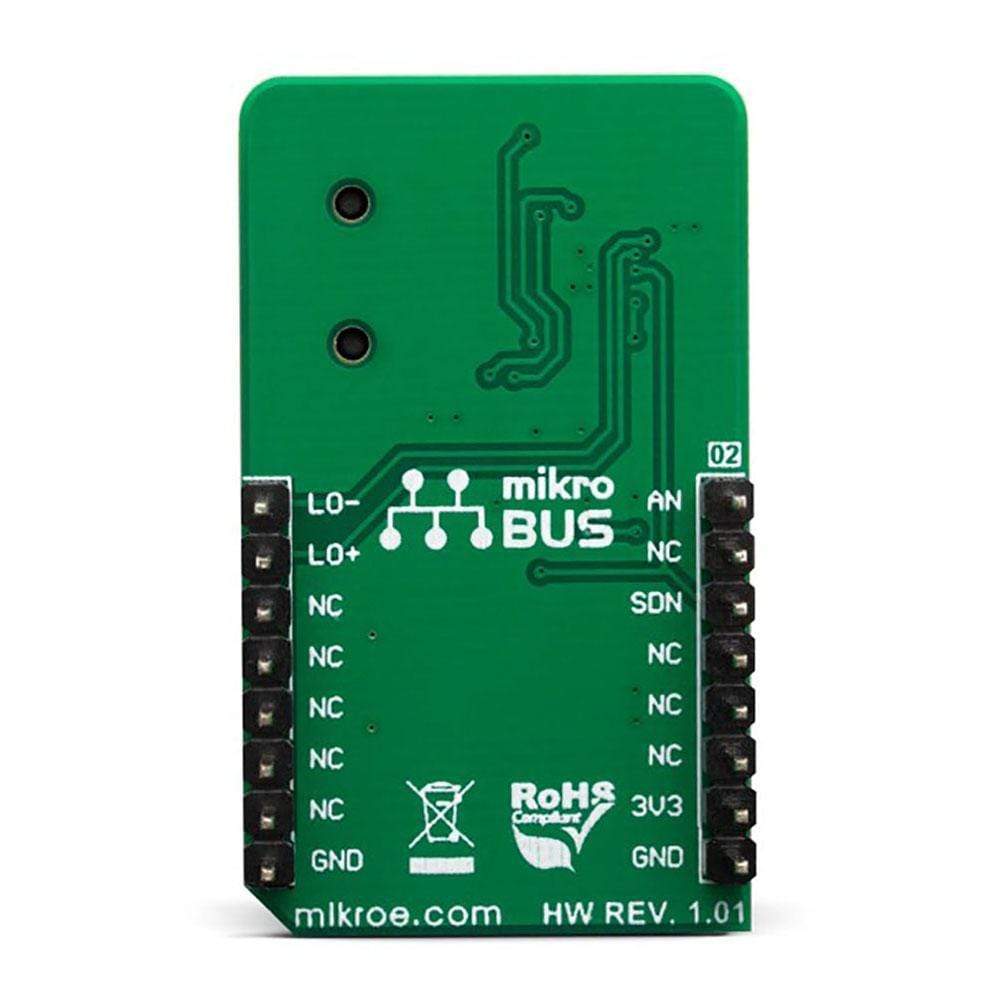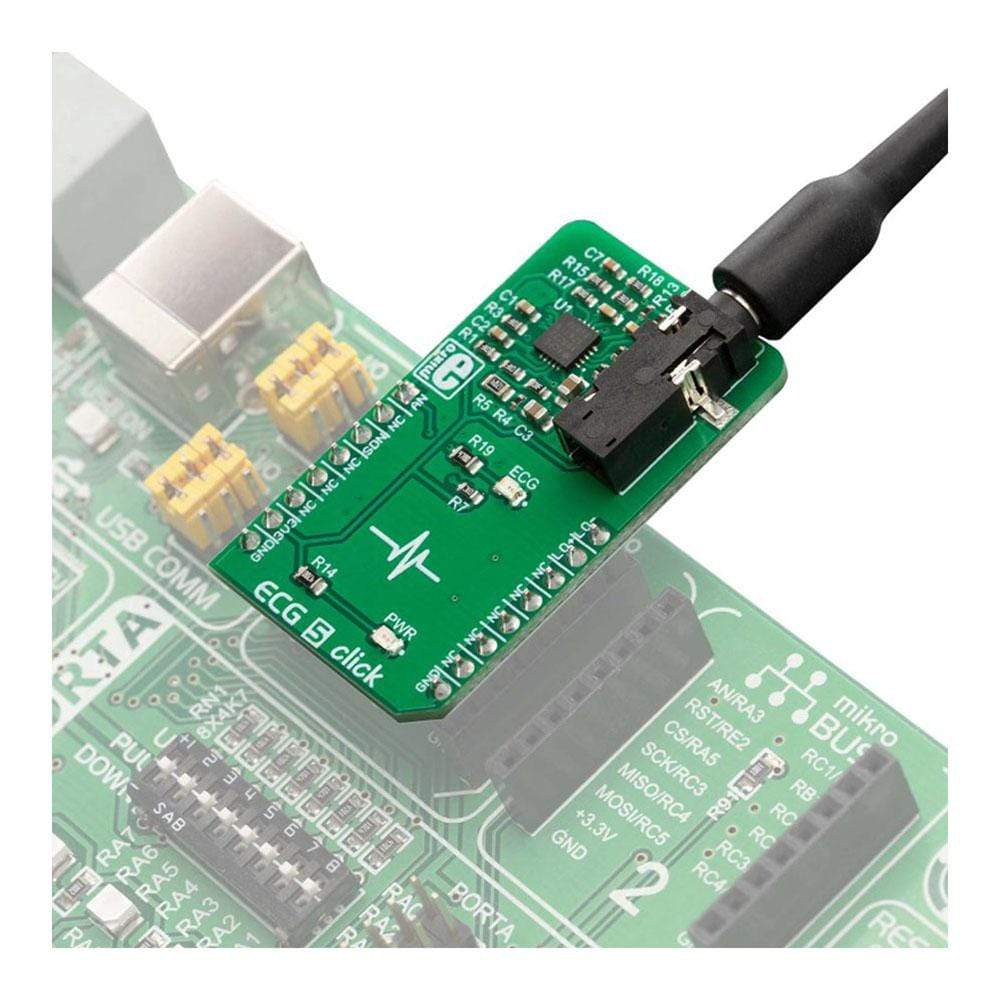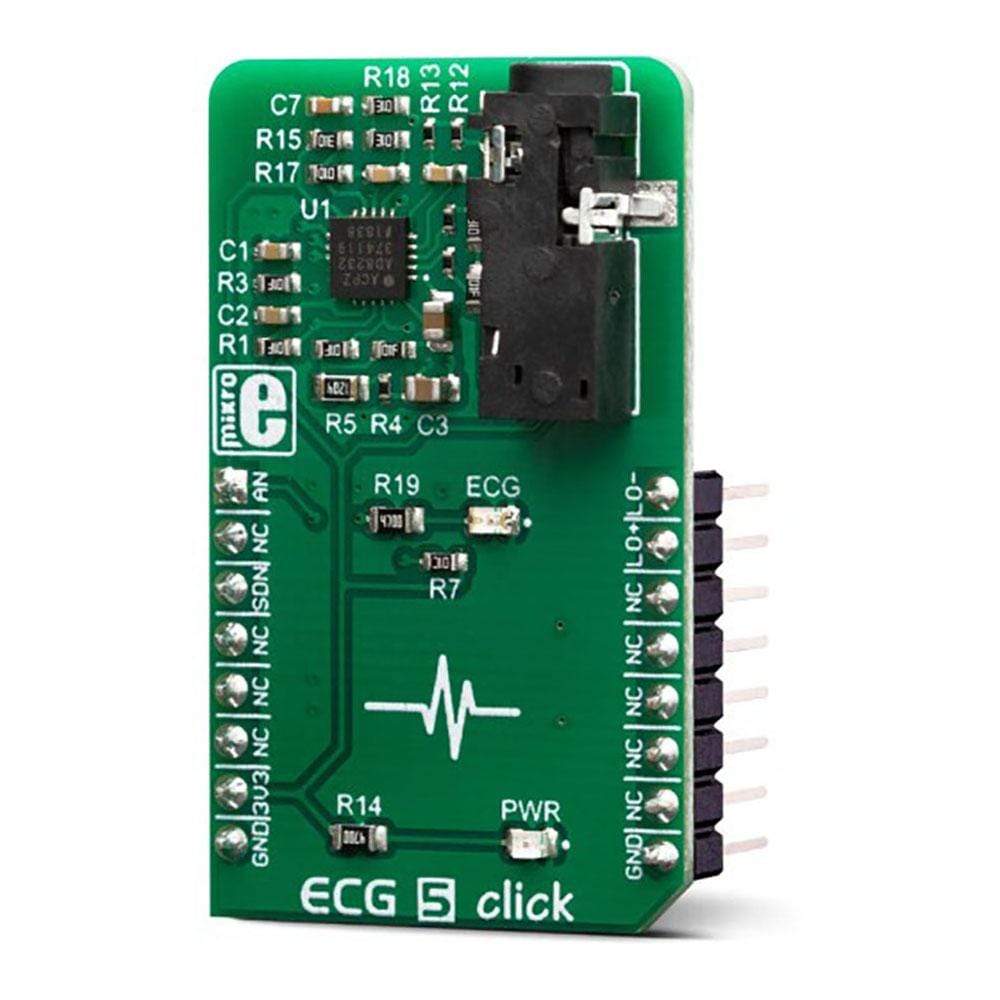
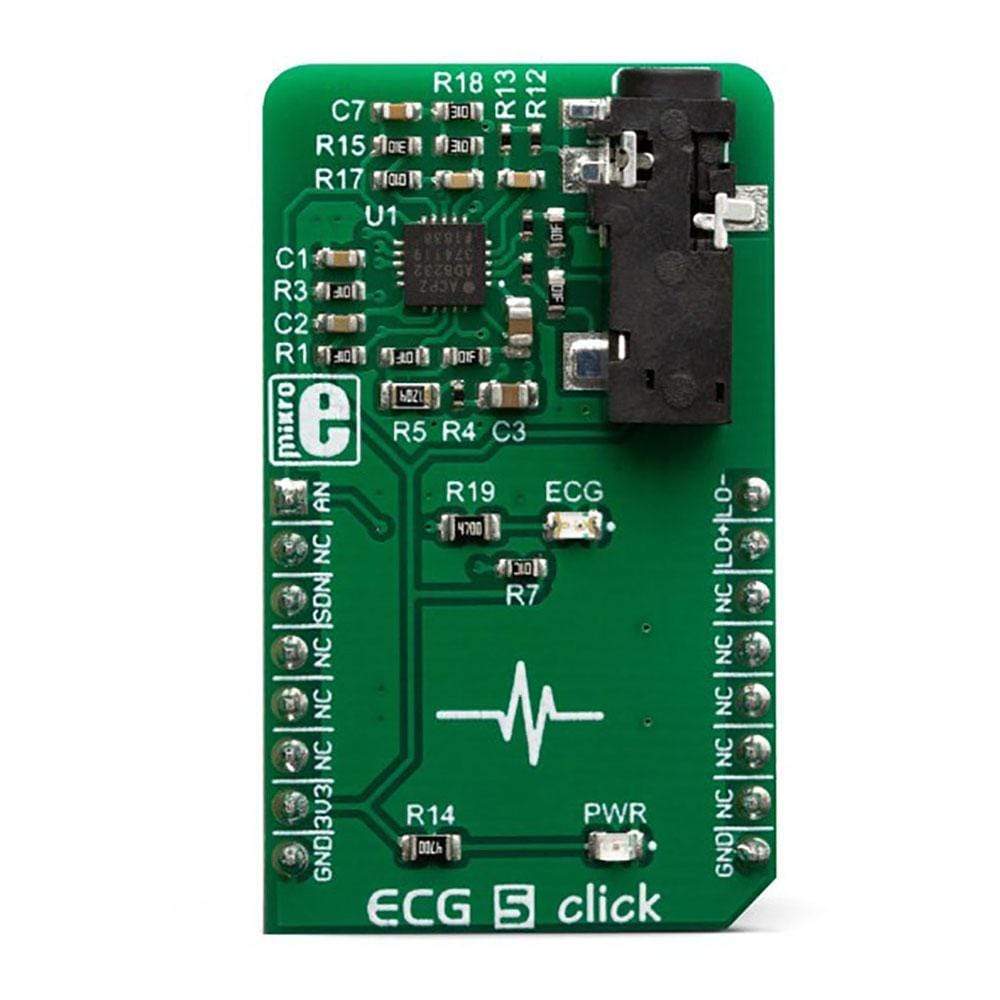

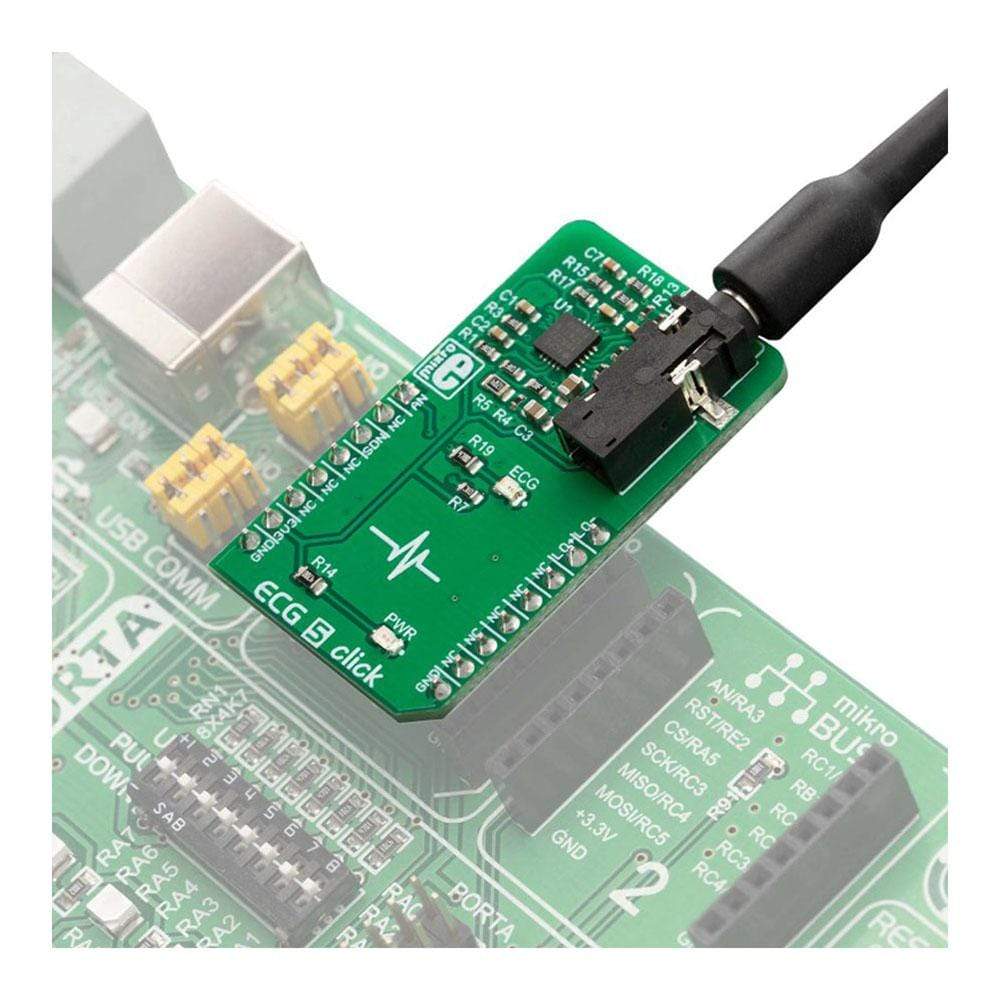
Overview
The ECG 5 Click Board™ can be used for the development of ECG and Heart-Rate (HR) applications. The Click Board™ features the AD8232, an integrated bio-signal front end. This IC has many features necessary for providing accurate ECG measurements, including a very high common-mode rejection ratio, high gain with DC blocking capability, adjustable high-pass and low-pass filters, integrated right leg drive (RLD), etc. Electrodes presence detection pin helps to reduce the overall power consumption, as it can be used to set the standby mode of the host MCU. The fully conditioned bio-signal is available at the analogue output to be sampled by an external A/D converter.
Downloads
Das ECG 5 Click Board™ kann für die Entwicklung von EKG- und Herzfrequenz-Anwendungen (HR) verwendet werden. Das Click Board™ verfügt über den AD8232, ein integriertes Biosignal-Frontend. Dieser IC verfügt über viele Funktionen, die für genaue EKG-Messungen erforderlich sind, darunter ein sehr hohes Gleichtaktunterdrückungsverhältnis, hohe Verstärkung mit DC-Sperrfähigkeit, einstellbare Hochpass- und Tiefpassfilter, integrierter Right Leg Drive (RLD) usw. Der Elektroden-Anwesenheitserkennungsstift trägt zur Reduzierung des Gesamtstromverbrauchs bei, da er zum Einstellen des Standby-Modus der Host-MCU verwendet werden kann. Das vollständig aufbereitete Biosignal steht am analogen Ausgang zur Verfügung und kann von einem externen A/D-Wandler abgetastet werden.
| General Information | |
|---|---|
Part Number (SKU) |
MIKROE-3446
|
Manufacturer |
|
| Physical and Mechanical | |
Weight |
0.018 kg
|
| Other | |
Country of Origin |
|
HS Code Customs Tariff code
|
|
EAN |
8606018714933
|
Warranty |
|
Frequently Asked Questions
Have a Question?
Be the first to ask a question about this.

